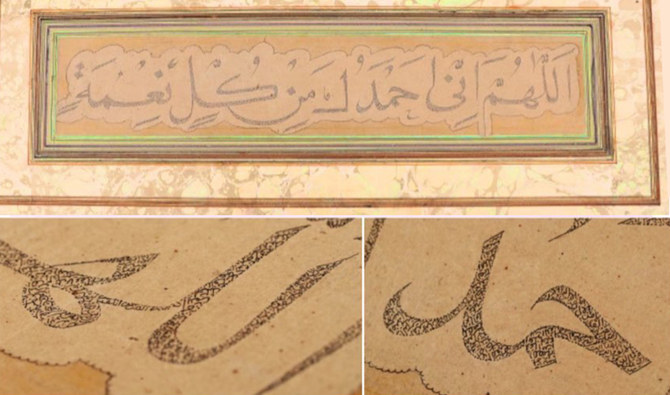MAKKAH: The Dust Ornament script, or the “Qalam Al-Ghubar,” is known for its minuscule font.
The Arabic script, which is now extinct, was written in such a small font that it was difficult to see with a naked eye, and was used in correspondence through homing pigeons.
The calligrapher of the Kaaba, Mukhtar Shaqdar, told Arab News that the Dust Ornament script first appeared in the 10th century and was derived from the Riasian script and has minuscule rounded letters.
The script’s inventors also borrowed some of its characteristics from the Thuluth and Naskh scripts.
Shaqdar said that while the Naskh and Thuluth scripts have survived the test of time, the Qalam Al-Ghubar script disappeared quickly because it was difficult to read or write. Other surviving scripts from this period are Ruqa’a, Diwani and Kufic.
He revealed that some calligraphers have attempted to revive the Qalam Al-Ghubar script. Many scripts have disappeared over the centuries due to the existence of more efficient versions.
The scripts were previously named after their regions of origin, such as Hijazi, Makki, Madani and Kufic, and there were many similarities between them.
Scripts were later named according to their shapes and usage such as the Al-Diwani script, which got its name because it was used in diwans.
Calligrapher Uqla Al-Hamad said: “Dust script is similar to the Ta’liq and Shikstah — an Arabic script that was invented in Iran during the Safavid era in the 16th century. It is very small, so it was called Dust script.
“I have seen samples of it. It is certainly more like the neglected Ta’liq script and very fine. It is written with a pen similar to a clipped needle.”
Mohammed Al-Sharqawi said that the Dust script was used by the diwans to send data and action commands.
He explained that the script is like grains of dust, and its letters are hardly distinguished by the naked eye. It is also reported that the Ottoman Turks invented it to write small copies of the Holy Qur’an that were kept in gold or silver boxes.
A famous calligrapher who used the Dust Ornament script was Ibn Zamkhal Ismail bin Abdullah. Imam Al-Asqalani said that Ibn Zamkhal Ismail “was the miracle of his time in writing with the Dust script. He used to write Surat Al-Ikhlas on a grain of rice with clear writing that could be read in its entirety, despite the smallness of the grain of rice.”






















